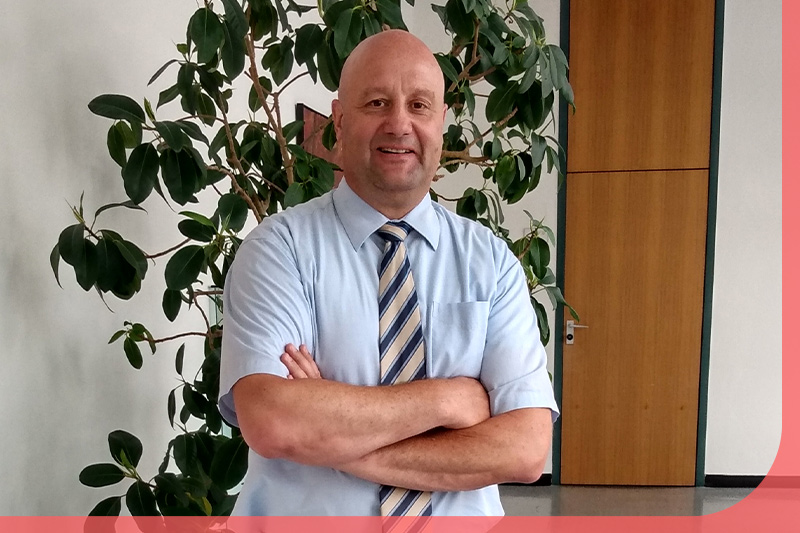
Every one of us is managing some kind of project on a daily basis without even being aware of it. What does it mean in terms of business to plan a project, organize and lead people through processes, and keep all stakeholders satisfied while changes in scope, time and costs are affecting its quality?
In an effort to find out more about this role, we spoke with our instructor at NIT Academy, Prof. Dr. Uwe Strohbeck. He generously introduced us to the complexities of the work that project managers do in their efforts to maintain the projects and land them successfully.

Finding a balance between managing people and carrying out technical tasks
From Dr. Strohbeck’s point of view, based on many years of experience, the most important skill that a project manager should possess is high reliability. Project management consists of many steps which lead to the execution of the project, but in that journey, he always serves as a good example for others. Project manager should also be extremely skilled in the tools he uses to be well organised regarding his working time. Which means he should never run out of time. If he does, the others will follow, and it can endanger the success of the whole project.
“In my course on project management, I can teach participants how to plan a project and how to monitor a project, but the big challenge of this role is how to manage people. Not just how to delegate tasks, but how to help members of their team overcome obstacles that new projects bring and to help them grow professionally and personally. These people-related challenges, unfortunately, I cannot teach, and that's the limitation of this course,” outlines Prof. Dr. Strohbeck.
Regardless, for the whole duration of the course, he is very open to sharing his hands-on experience to help participants gain insight into this role and be prepared to step into the challenges that it holds. He believes that to become a great project manager, you need to experience every aspect of this position first to be able to fully understand the title.
On the other hand, he states that there are many free web tools and also paid tools that support product management methodology on planning, monitoring, tracking and controlling the execution of projects.
In Dr. Strohbeck’s opinion regarding project planning, Microsoft Project is definitely state-of-the-art. “Based on my experience, what I've seen regarding project control and project monitoring, a lot of people do this by MS Excel or any other similar program, and there are, in rare cases, integrated solutions for planning and monitoring using one tool. But these are most likely tools which are introduced by the company and not brought by a single person.”

From initiation to successfully landing a project: Step-by-step approach
Looking at the theory, there are a lot of possible step-by-step approaches, but it all comes down to providing management and stakeholders with enough information to make a final decision - Yes or no.
“Usually, the project gets initiated by the customer or company, and it’s a task for a project manager to bring it to a status where the management board can further make a decision. I think that this early project phase consists of: collecting information, evaluating them, calculating numbers and making a decision proposal. Based on my experience, that is how I’ve seen projects get started,” said our professor.
In his opinion, the reliability of a project manager comes from his carefully structured and planned KPIs that are almost always based on numbers and calculations. There are many different KPI variations but you have to take in account that you always have to use objective criteria in order to get the KPI numbers. It will not help if it's just the best guess of everybody because then the whole project's starters is the best guess. Regardless if it's the number of tasks, spent effort, or even the cost - there always have to be objective criterias in order to calculate these numbers. Regarding KAIs, I think this is included in the overall continuous improvement process, which means how to develop people to improve their knowledge in order to improve the whole project management process in the company. The KPIs are more something local - focused on a project, whereas KAIs are focused on the complete company.
An important part of our Project Management Fundamentals course is also risk management. “We teach participants how to define the project, define the requirements of the project and how to cope with risks. That, for me, is the very important part, as much as the project planning phase and project execution phase,” added Dr. Strohbeck.
A step-by-step approach, from his point of view, is to teach participants how to structure their project in smaller pieces so that they can estimate the effort, evaluate possible risks and small enough that they can talk to experts on how to resolve possible issues. The first step is to divide the big block project into smaller tasks.
The second is to think about how to bring all these tasks in a logical order, what needs to be done one after the other and which tasks you need to carry on in parallel. The third step is assigning people or materials - dedicating resources to this task, checking for the availability of the resources and making sure you’re meeting the project budget. After all of these steps, you need two to three iterations until you meet all the requirements. That's the usual step-by-step approach to project planning.
He also mentioned that a big part of this course is exercises, so it's not just theory. With his help, participants are planning a complete project using planning software in terms of schedule, resources and costs and on the other hand, there is an exercise for monitoring a project where participants calculate their own KPIs working this case. In the Professor's opinion, these two exercises help a lot to map the knowledge to real life.

“In accordance with the title of this course, we’re really focusing on the fundamentals regardless of which project model you are using later on - waterfall, scrum, incremental… Also, regardless of which software tools you are using, we are looking behind the curtain and really trying to familiarize participants with the basic understanding of Project management. Show them what is the common step-by-step approach for any model and what is the story behind it. That’s the focus of this project management course,” explained our instructor.



